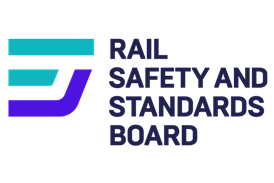IN A PERIOD of 17 years following deregulation under the Staggers Act of 1980, the major Class I railways in the US achieved a threefold reduction in the cost per gross tonne-km of maintaining and renewing their infrastructure. They did it by investing heavily in raising track quality, and in lubrication and profile grinding, thus cutting the maintenance bill. A by-product of quality was a threefold decrease per gross tonne-km in accidents caused by track and signalling.
Faced with a crippling increase in access charges, British freight operator English Welsh & Scottish Railway commissioned two reports into relative infrastructure costs incurred by Railtrack and the US Class Is. They have been submitted to the Rail Regulator, who is due to report on freight access charges later this month. LEK Consulting found that US infrastructure cost per gross tonne-km was 0·15p, whereas Railtrack was charging EWS 0·38p (and telling the Regulator it was not enough to cover its costs). TTC Inc concluded that by adopting US track materials and standards for freight lines, Railtrack’s life cycle track costs could be reduced from 0·23p to 0·11p.
Benchmarking Australia’s railways against the US Class Is has already produced substantial gains in efficiency and productivity, despite inadequate funds for investment. It is high time Europe followed suit, and these studies point the way to massive gains. Some will argue that Europe’s passenger railways cannot be compared with US freight carriers. LEK demolishes this objection. For example, more than 40% of Class I track used by US passenger trains can be used at 130 km/h or more, whereas trains exceed 120 km/h on just over 30% of Railtrack’s passenger network. While British freight trains travel about 30 km/h faster than the US average, and there are more structures to maintain per route-km, the heavier axleloads in North America cause greater track damage.
These reports demand serious consideration, not just in Britain but in the context of proposals for a Trans-European Freight Network. Such routes should have curves canted for freight rather than passenger speeds, for example, and an increase in axleloads from 22·5 to 25 tonnes or more is long overdue. In the inaugural Gustave Eiffel Lecture in London on April 11, Sir Alastair Morton, Chairman of the Shadow Strategic Rail Authority, challenged European leaders to break down artificial barriers preventing the creation of rail freight networks. ’Europe will not be efficient unless France and Germany open their freight systems to international traffic, and invest in their capacity and their cross-border and domestic efficiency’, he warned.




















